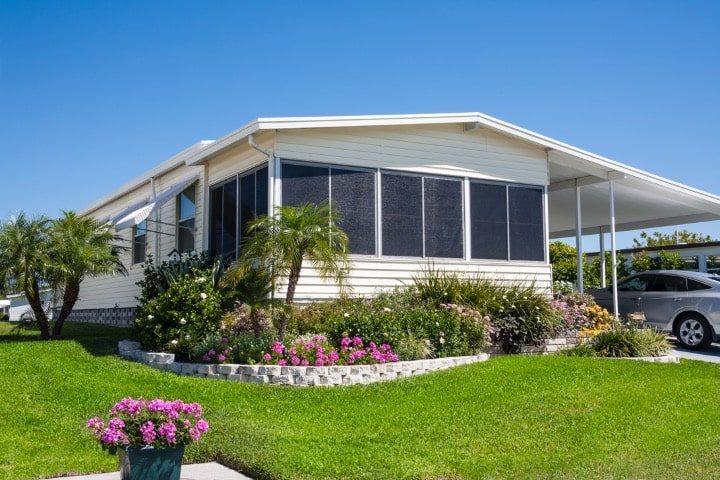
A new Department of Energy (DOE) rule requiring mobile homes to be made more energy-efficient in order to reduce carbon emissions not only will have no effect on carbon emissions, but also will drive up the cost of such housing, making it unaffordable for many low-income households.
The DOE’s rule — all 97 pages of it — requires mobile, or manufactured, homes to meet strict energy-conservation standards by improving insulation and sealing. The rule is set to take effect next Wednesday, barely more than a year after it was finalized.
“DOE’s new energy efficiency rules will help save the 17 million Americans residing in mobile homes up to $475 per year on average on their utility bills,” Energy Secretary Jennifer Granholm said in a press release. “The rules will hold manufacturers of these U.S. homes to cost-saving efficiency standards, giving residents more comfortable living environments and a much-needed break on their annual utility costs, while delivering cleaner air for their communities.”
As with most government pronouncements, Granholm’s bears little resemblance to reality.
According to the DOE, the new standards “will help bring the country closer to reaching President Biden’s goal of net-zero emissions by 2050.” That is true in the same sense that taking one step to the east of Los Angeles brings one closer to reaching New York by nightfall.
“According to the DOE’s own estimates, over a 30-year period, the new rule will reduce CO2 emissions by 80.4 million metric tons,” the Manhattan Institute’s Jonathan Lesser told the Daily Caller. “By comparison, according to the 2022 BP Statistical Review of World Energy, U.S. energy-related CO2 emissions were 4.7 billion metric tons. So, over a 30-year period, the new rule will reduce CO2 emissions by the equivalent of 150 hours of U.S. emissions in 2022.… Obviously, this rule will have zero impact on climate.”
Then there’s the matter of just how much consumers will benefit from the rule. Although the DOE estimates the average consumer will save anywhere from $177 to $475 a year on utilities, it also projects that its regulations will make mobile homes $4,100 to $4,500 costlier. As far as the DOE is concerned, “the benefits to the nation … outweigh the burdens.”
That’s easy for people who live in one of the wealthiest parts of the country — and who aren’t going to bear the costs of their dictates — to say. According to a lawsuit against the DOE brought by the Manufactured Housing Institute (MHI) and the Texas Manufactured Housing Association (TMHA), the median income of mobile-home owners is $35,000. As the MHI put it in a press release announcing the suit, the DOE rule “will price thousands of Americans, primarily low-income families and minorities, out of the housing market.”
Even the DOE seems to recognize this, which is why, according to its press release, it is “supporting the establishment of credit-enhancement mechanisms … to drive down the cost of financing for manufactured housing” — yet another case of government’s trying to solve a problem one of its interventions created by piling on another intervention.
Those who still can’t afford new homes will be forced to choose between staying put or renting. Lesser told the Daily Caller the rule looks like it was “designed to force more low-income consumers into rentals,” while American Institute for Economic Research economist Jason Sorens added that “the rule could also have the side effect of encouraging people to stay in older, cheaper homes that are lacking in other modern safety and efficiency features.”
“In general,” he explained, “command-and-control environmental rules like this one that mandate a specific technology are out of favor with economists. It’s far better to price energy appropriately and let consumers make up their own minds how they want to be more efficient.”
The MHI and TMHA are challenging the DOE rule’s “arbitrary and unrealistic 1-year deadline,” said their press release. “DOE failed to consult with HUD [the Department of Housing and Urban Development, which maintains the federal building code for manufactured homes], and the standards do not align with the HUD code, contain inaccurate cost estimates, do not take current manufactured home construction methods into consideration, and fail to address testing, inspection and certification.”
The organizations have also requested a stay of the rule while their case makes its way through the courts.



